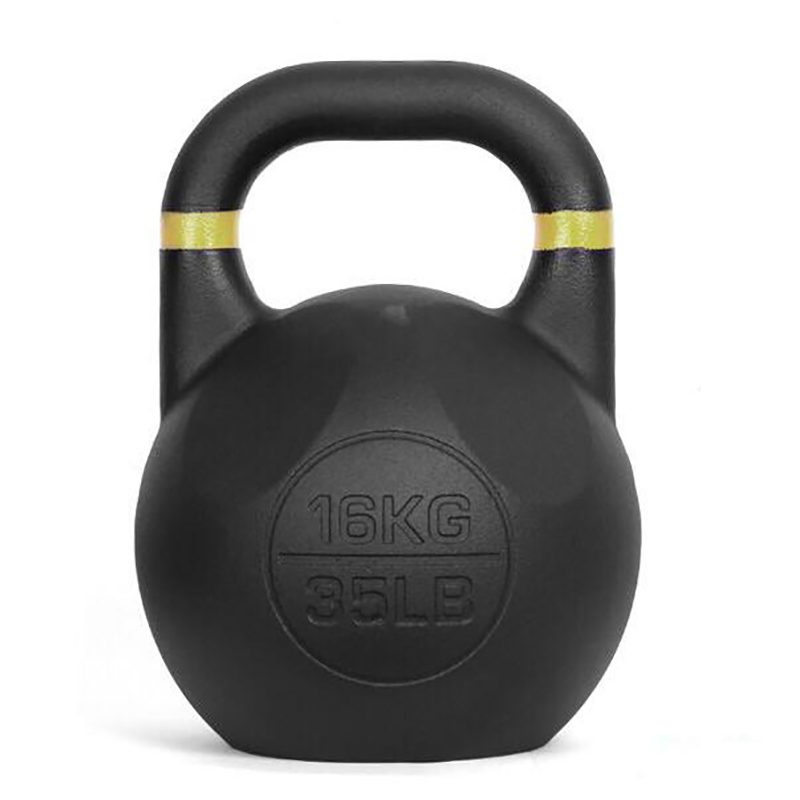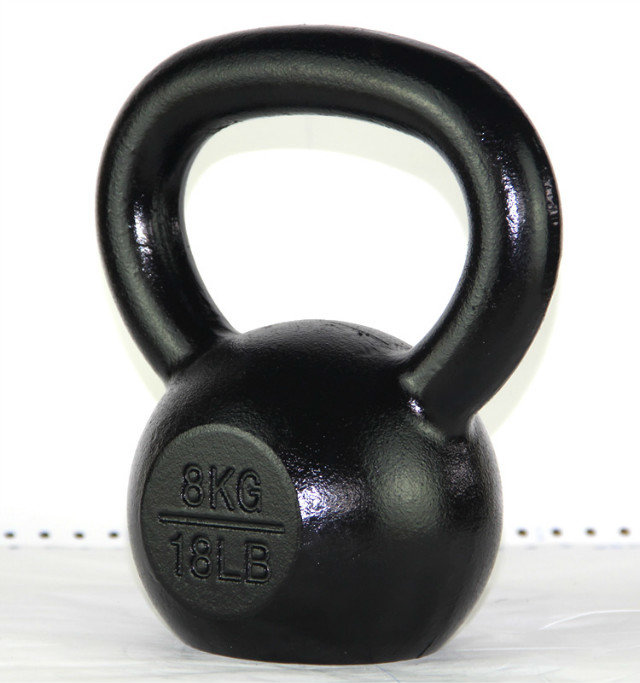Choosing the right kettlebell for you is a task that requires careful consideration, because the choice of kettlebell directly affects your fitness results and training safety. In this article, we will discuss in detail how to choose the right kettlebell for you in terms of kettlebell styles, fitness exercises, materials, and prices.
1. Style of kettlebells
The choice of kettlebell styles is mainly divided into traditional kettlebells and competitive kettlebells. Each style has its unique design features and applicable scenarios.
1.Traditional kettlebell
A traditional kettlebell, also called a cast iron kettlebell, is shaped like a round ball with a handle. This kettlebell has a simpler design and a lower center of gravity, making it ideal for home use. Features of traditional kettlebells include:
Versatility: Can be used for a variety of exercises such as swings, presses, weightlifting, and more.
Even weight distribution: suitable for novice and intermediate level exercisers.
Affordable price: Compared with competitive kettlebells, traditional kettlebells are less expensive and suitable for people with limited budgets.
2.Competition Kettlebells
 Competition kettlebells are similar in appearance to traditional kettlebells, but have a more sophisticated design and are typically used for competition and high-intensity training. Features of competitive kettlebells include:
Competition kettlebells are similar in appearance to traditional kettlebells, but have a more sophisticated design and are typically used for competition and high-intensity training. Features of competitive kettlebells include:
Uniform Size: Regardless of weight, competition kettlebells are generally consistent in size and shape, making it easy for users to adapt.
PRECISE WEIGHT MARKING: Ideal for bodybuilders and professional athletes who need precise weight control.
Suitable for high-intensity training: such as kettlebell deadlifts, kettlebell presses and other complex movements.
2. Choose kettlebells according to fitness exercises
Different fitness exercises have different requirements for kettlebells, so when choosing kettlebells, you should choose according to your own fitness goals and training plan.
1. Strength training
For strength training, such as kettlebell deadlifts, kettlebell squats, etc., it is recommended to choose heavier kettlebells. Because strength training requires greater resistance to stimulate muscle growth. Beginners can start with lighter kettlebells and gradually increase the weight.
2. Aerobic exercise
If the main goal is to perform aerobic exercises, such as kettlebell swings, kettlebell swings, etc., you can choose lighter kettlebells. These exercises require high repetitions, and lighter kettlebells can reduce muscle fatigue and improve cardiorespiratory endurance.
3. Core training
For core training such as kettlebell windmill, kettlebell knee raise, etc., it is recommended to choose a medium-weight kettlebell. This type of training focuses on stability and control, with moderate weights providing adequate challenge while reducing the risk of injury.
3. Material of kettlebell
The material of the kettlebell directly affects its service life, feel and safety. Common kettlebell materials include cast iron, steel, plastic, and rubber.
1. Cast Iron Kettlebell
Cast iron kettlebells are the most common type and are affordable and durable. Features of cast iron kettlebells include:
Durability: Cast iron is durable and suitable for long-term use.
Good feel: The surface is usually smooth and feels comfortable.
Easy to maintain: Not easy to damage, it can be used for a long time with simple maintenance.
2. Steel Kettlebell
Steel kettlebells are commonly used in competitive and professional training and their advantages include high precision and even weight distribution. Features of steel kettlebells include:
High precision: Accurate weight, suitable for users who need precise weight control.
Uniform Size: Kettlebells of different weights are of the same size, making it easy for users to adapt.
High-intensity: suitable for high-intensity professional training and competitive competitions.
3. Plastic kettlebell
Plastic kettlebells are generally less expensive and suitable for entry-level exercisers or those on a budget. Features of plastic kettlebells include:
Inexpensive: Plastic kettlebells are more affordable compared to cast iron and steel kettlebells.
Diversity: Rich colors and styles, suitable for home fitness use.
4. Rubber kettlebell
Rubber kettlebells are usually cast iron or steel kettlebells wrapped with a layer of rubber, which has good anti-slip and protective effects. Features of rubber kettlebells include:
Protective: The rubber outer layer protects the floor and the kettlebell itself, reducing damage.
Strong anti-slip: anti-slip surface design improves safety of use.
Good noise reduction effect: The rubber layer can reduce the noise when the kettlebell lands, suitable for home and gym use.
4. The price of kettlebells
Kettlebell prices vary based on their material, brand, and weight. When choosing a kettlebell, consider both your budget and the quality and longevity of the kettlebell.
1. Entry-Level Kettlebell
Entry-level kettlebells are usually less expensive and suitable for beginners on a budget. Most of these kettlebells are made of plastic, are lightweight, and are suitable for basic training.
2. Mid-range kettlebell
Mid-range kettlebells are affordable, have good quality and durability, and are suitable for users with some fitness experience. These types of kettlebells are mostly made of cast iron or rubber-coated material, with a wide range of weight options, suitable for a variety of training needs.
3. High-end kettlebells
High-end kettlebells are more expensive but offer excellent quality and accuracy, making them suitable for professional bodybuilders and athletes. These kettlebells are mostly made of steel and have precise weights, making them suitable for high-intensity and professional training.
5. Comprehensive consideration
When choosing a kettlebell, factors such as style, exercise, material, and price should be considered. Here are some specific suggestions:
1. Set fitness goals
First, you must clarify your fitness goals, whether they are to gain muscle, lose fat, or improve cardiorespiratory endurance. Different fitness goals require different kettlebell weights and styles.
2. Choose the right weight
Choose the appropriate kettlebell weight based on your fitness level and training experience. Beginners can start with lighter weights and gradually increase the weight as their fitness improves.
3. Consider material and feel
Choose the right kettlebell material based on your personal preference. Cast iron kettlebells are durable, steel kettlebells are highly accurate, plastic kettlebells are inexpensive, and rubber kettlebells have good slip resistance.
4. Choose based on budget
Choose the right kettlebell based on your budget. While high-end kettlebells are of better quality, mid-range kettlebells can meet most fitness needs.
Choosing the right kettlebell for you requires considering a variety of factors. Traditional kettlebells and competitive kettlebells each have their own advantages and are suitable for different fitness scenarios; different fitness sports have different requirements for the weight of kettlebells; materials such as cast iron, steel, plastic and rubber each have their own advantages and disadvantages; choose a cost-effective option within your budget Tallest kettlebell. Hopefully this article will help you make informed decisions when choosing a kettlebell to improve your fitness and training safety.
